The Scarlet macaw, also known as, Ara Macao, is a large Neotropical parrot with bright red, yellow, and blue feathers. Its native range is South and Central America. As its name implies, this tree is native to the wet evergreen forests of the Neotropics. While habitat destruction and capture due to the pet parrot trade have led to its extinction in certain areas, the species is still found in large numbers in other areas. Like its close relative, the blue and yellow macaw, the scarlet macaw is a popular pet bird because of its vibrant plumage.

Keep on reading to learn ten incredible Scarlet macaw facts!
1. Scarlet macaws are native to Central and South America
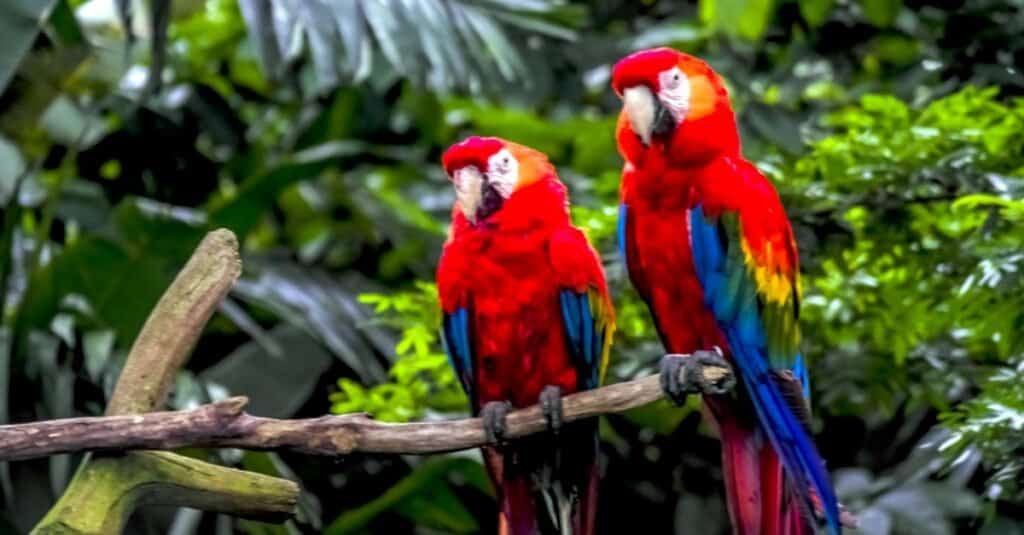
Scarlet Macaws are the most intelligent bird species in the world and can mimic words and sounds and learn tricks in captivity.
©iStock.com/MagicColors
The Scarlet macaw, a large and colorful parrot, is endemic to several countries in South and Central America. Included in this group are countries such as:
- Belize
- Bolivia
- Brazil
- Colombia
- Costa Rica
- Ecuador
- Guatemala
- Honduras
- Mexico
- Panama
- Peru
- Venezuela
These animals are most often found in lowland, humid rainforests up to an altitude of 3,280 feet (1,000 meters).
2. Scarlet macaw’s range is big but mostly fragmented
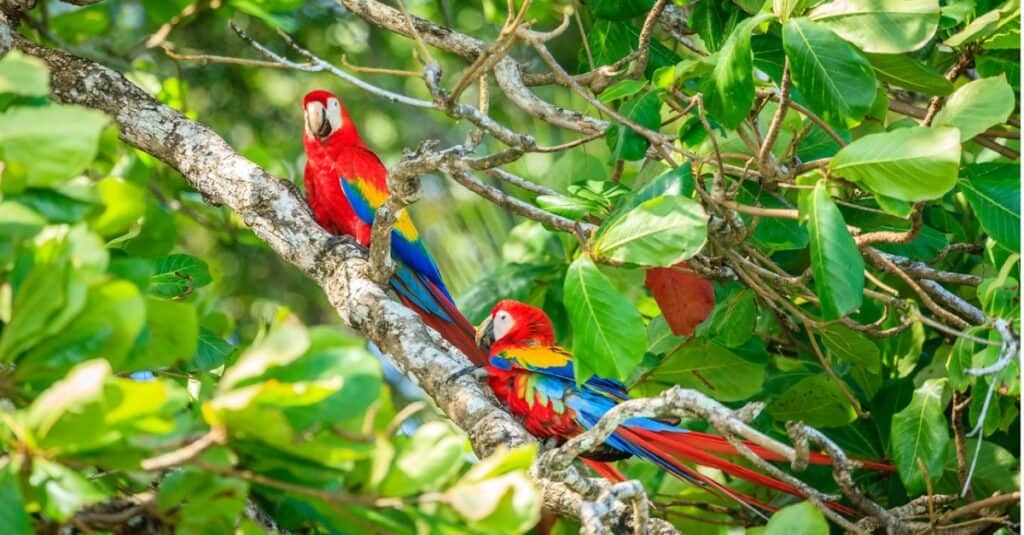
Scarlet macaws contain all the shades of a flame with their red, green, blue, and yellow plumage.
©iStock.com/alexeys
The range of these birds is enormous, stretching over 2,586,884 square miles! The Scarlet macaw population may be vast, but this does not reflect their communal lifestyle. Instead of forming big colonies, they prefer to form smaller, more dispersed groups.
3. Scarlet macaws are part of a group referred to as “macaws”
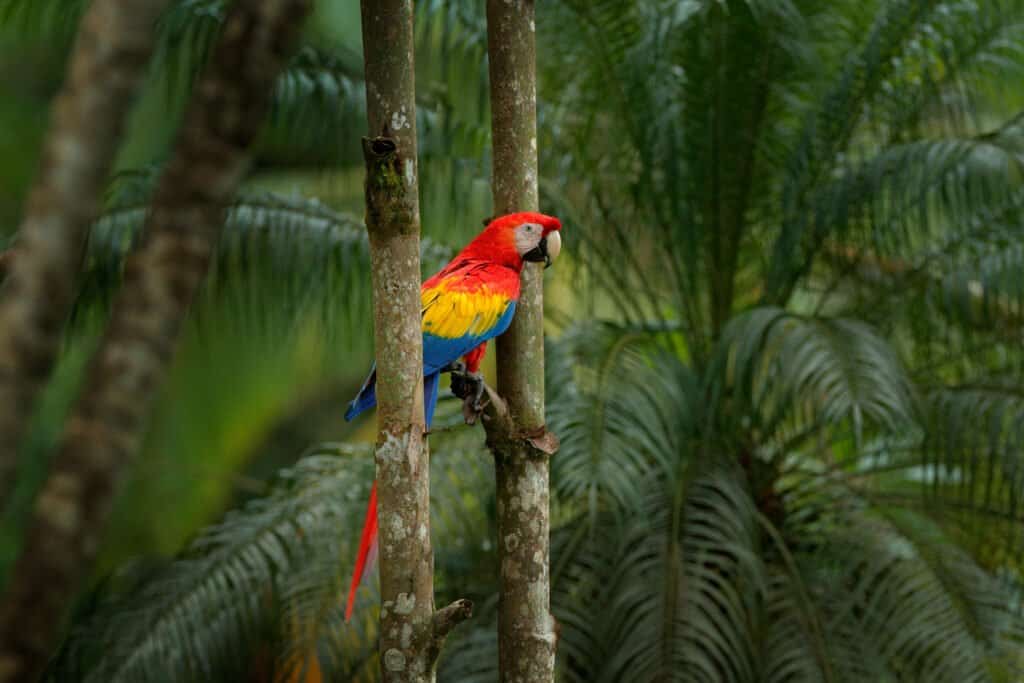
There are 19 unique species here; several are critically endangered or extinct.
©Ondrej Prosicky/Shutterstock.com
The Scarlet macaw is a member of the genus macaw, which includes several other closely related bird species. There are 19 unique species here; several are critically endangered or extinct. Among the most well-known Macaws are the Hyacinth Macaw, Blue and Yellow macaw, and the Red and Green macaw.
4. There are 2 distinct subspecies of scarlet macaws

The tail of a Scarlet macaw accounts for more than half of the bird’s total length.
©Jeff Schultes/Shutterstock.com
Two additional recognized subspecies of Scarlet macaws are the Cyanopterus and the Macao, and the latter is the common subspecies and is endemic entirely to South America. It is also slightly smaller, and its wings are a beautiful shade of green in addition to being blue.
5. Scarlet macaws can mimic human speech

The scarlet macaw (Ara macao) has a wide vocal range and prefers to shout than talk.
©Karel Bartik/Shutterstock.com
When communicating, Scarlet macaws make loud, distinctive squeaking noises that can be heard from far away. They have a wide vocal range and prefer to shout than talk. One of the most astonishing things about scarlet macaws is their ability to mimic human speech, which has contributed to their popularity as pets.
6. Scarlet macaws are the largest type of parrot

Scarlet Macaws are curious, strong-willed, and highly trainable.
©Ondrej Prosicky/Shutterstock.com
A fully grown individual of these birds can reach a length of up to 80 cm (31 inches). The tail of a Scarlet macaw accounts for more than half of the bird’s total length, which is a remarkable feat in and of itself. You won’t find another huge parrot with a tail like theirs. Because of this, they can keep their weight down to under 1 kilo while still providing the same level of service (2.2 lbs.).
7. Scarlet macaws can be identified by their colors
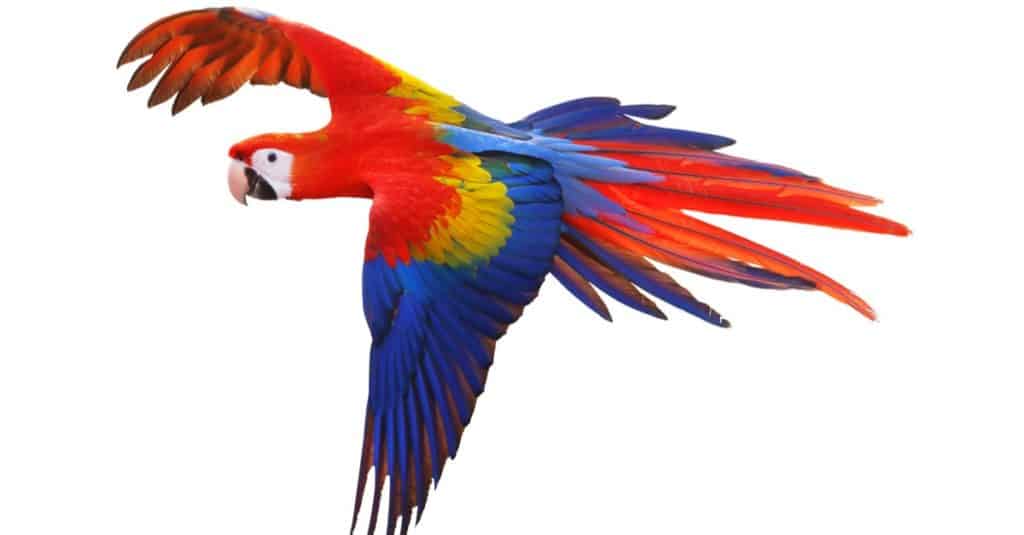
Scarlet macaws also have a relative with a similar color pattern.
©Passakorn Umpornmaha/Shutterstock.com
These colorful animals are easy to see. Their scarlet body and primarily blue wings are remarkable. Scarlet macaw wings also feature green and yellow hues. Their eyes and bill are mostly white with some black, and their white feathers reach their black mouth. Scarlet macaws also have a relative with a similar color pattern. This larger parrot is a Green-winged macaw. You can’t tell them apart by size alone, but their counterparts primarily have green wings.
8. Even though their habitat has gotten smaller, they aren’t endangered

Remains of macaws and their nesting platforms have been unearthed at Mexican archaeological sites.
©CHUCHAT TREEPRAPHAKORN/Shutterstock.com
One of the most remarkable things about Scarlet macaws is that they have been successfully bred in captivity for centuries. The remains of macaws and their nesting platforms have been unearthed at several Mexican archaeological sites. The most blatant is their being specifically bred to use their flashy feathers in rituals and as decorations.
The International Union for Conservation of Nature has placed this bird species in the “Least Concern” category of its Red List because it is not considered to be in danger of extinction. Although they are still abundant across much of their range, this doesn’t guarantee their safety due to the severe habitat loss they have experienced.
9. Scarlet macaws are held and bred in captivity all over the world
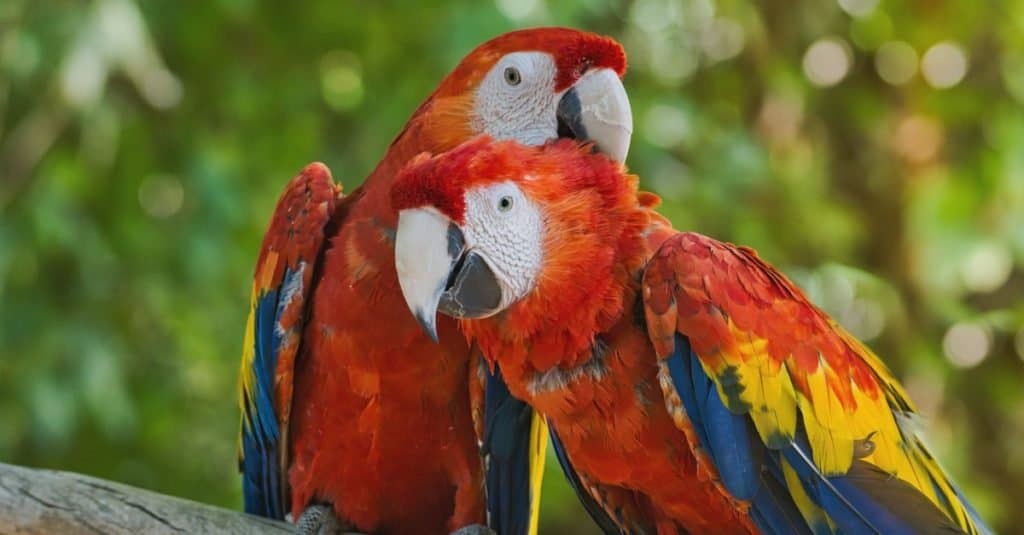
Scarlet macaws are popular as pets and can be seen in most major zoos around the world.
©Amy Newton-McConnel/Shutterstock.com
Despite being classified as “Least Concern” on the IUCN Red List, the possibility of these birds going extinct is exceedingly low. The primary cause of this is their prolific reproduction in zoos and aquariums around the globe. These beautiful parrots are popular as pets and can be seen in most major zoos around the world.
10. Scarlet macaws have a long lifespan

Some scarlet macaws have been known to live as long as humans.
©Daria Lixovetckay/Shutterstock.com
These parrots have the potential for exceptionally long lives, with an average lifespan of 40–50 years. However, some captive macaw species have been known to live as long as 90 years!
The photo featured at the top of this post is © Ondrej Prosicky/Shutterstock.com
Thank you for reading! Have some feedback for us? Contact the AZ Animals editorial team.






